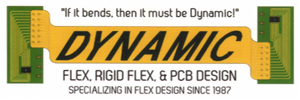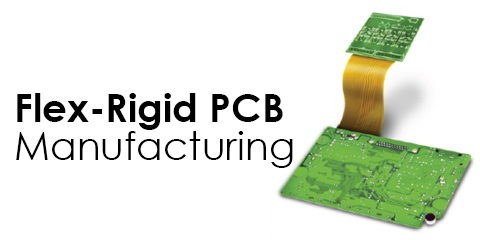Everything You Should Know about Flex-Rigid PCB Manufacturing Technology.
Rigid PCB definition
By definition, rigid PCB is inflexible, solid printed circuit board. We are all aware that a PCB may either be single-sided, double-sided, or multilayered. Simultaneously, a printed circuit board can be flexible, rigid, or rigid-flex (a combination of flexible and rigid PCB).
So, a rigid circuit board is something that we cannot force out of shape or bend; it isn’t flexible. A rigid PCB can be single-sided, double-sided, or multilayer. Once a rigid circuit board is fully manufactured, they cannot be folded into or modified to any other shape.
Rigid-flex circuits
Rigid-flex circuits are boards that use a combination of rigid and flexible board technologies in an application. Majority of the rigid-flex boards comprise multiple layers of flexible circuit substrates attached to one or more rigid boards internally or externally, based on the application design. The flexible substrates are designed to be in a constant state of flex, usually formed into the flexed curve during installation or manufacturing.
Rigid-flex PCB design guidelines
The rigid-flex PCB must be correctly designed. Follow the rigid-flex PCB design guidelines below:
- Don’t try to bend at the corners. When making a bend, it is important to keep the bend curved instead of sharp.
- Change the width of the traces gradually. If you change the trace width abruptly, you may end up producing a weak spot.
- Try to keep the flex layers to a minimum, for example, two at the most for reduced costs and increased mechanical flexibility.
- When deciding on the trace width and spacing within the flexible parts, ensure that you keep them as possible. You can use a trace width calculator for attaining precise results.
- The connections of the solder pads and tracks should be carried out in a tear-drop-like, or rounded style.
- The soldering surfaces and annular rings should be as large as possible.
- Using stiffeners will facilitate in accomplishing a final thickness of 0.2mm to 1mm.
Rigid-flex PCB applications
Rigid-flex PCB has an extensive range of applications; for instance, it may be used in a plethora of common electronic products. Also, it can also be installed in high-end control systems. The medical devices and smart devices are the most significant conventional applications of rigid-flex PCBs.
Rigid-flex PCB can offer a range of advantages to meet the needs and demands of smart device design because it can not only reduce the overall weight of electronic equipment but can also reduce the size of the exterior. Besides, for medical equipment, the advantage that comes with rigid-flex PCB is that it can be folded and bent in a very compact space range, which may greatly enhance the equipment’s reliability.

